Decompose Numbers in Math - Definition, Examples, Quiz, FAQ, Trivia
Learn to break numbers into smaller parts with easy explanations, examples, and practice activities
What is Decomposing in Math?
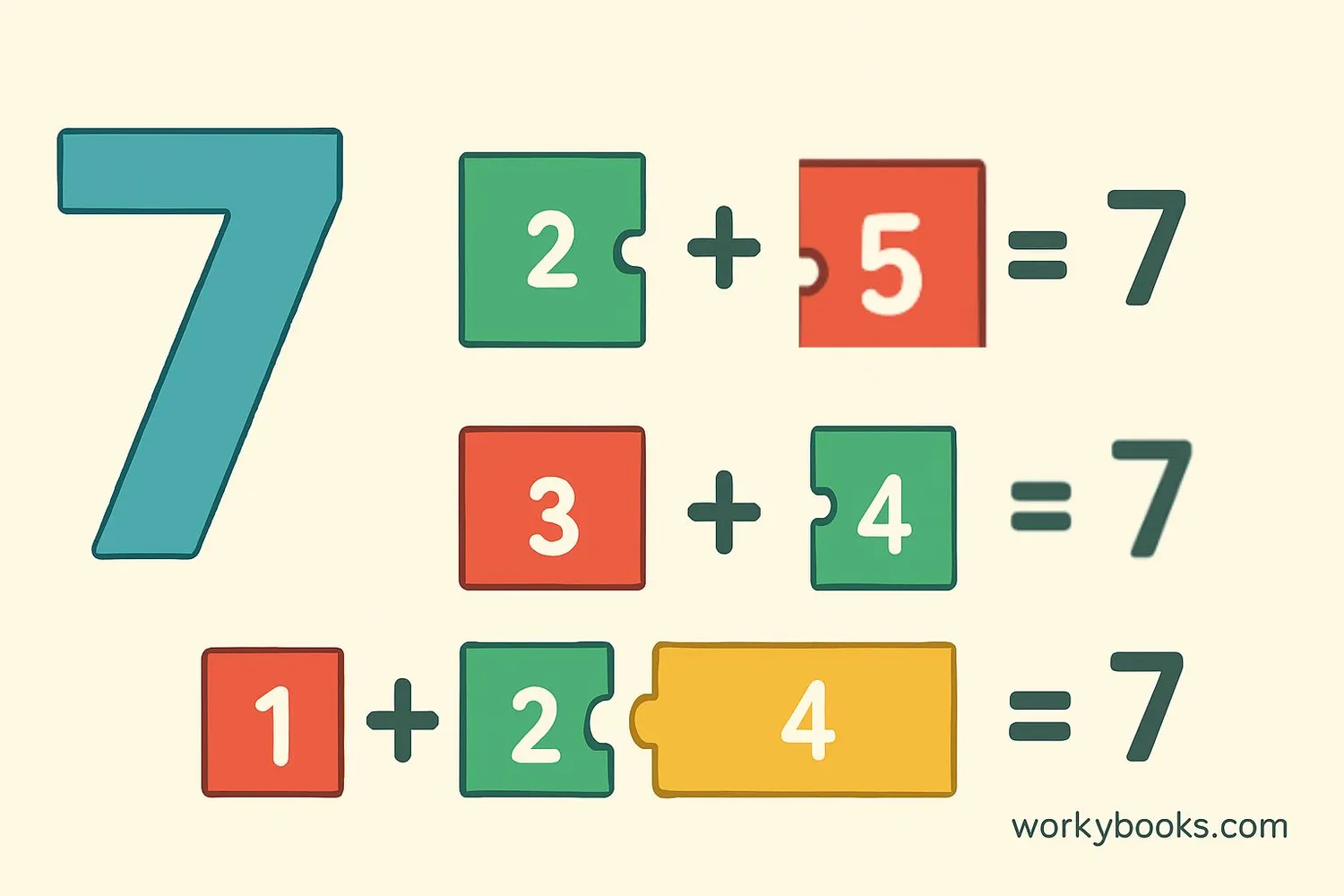
Decomposing numbers means breaking them down into smaller parts. Think of it like taking apart a puzzle - you start with a whole picture and break it into individual pieces.
Definition: Number decomposition is the process of separating a number into smaller numbers that add up to the original number.
Why do we decompose numbers? It helps us understand how numbers are made and makes math problems easier to solve. When you decompose numbers, you're seeing the different combinations that create the same total.
Key Concept
Every number can be broken down in multiple ways. For example, 5 can be 4+1, 3+2, 2+2+1, or even 5+0.
How to Decompose Numbers
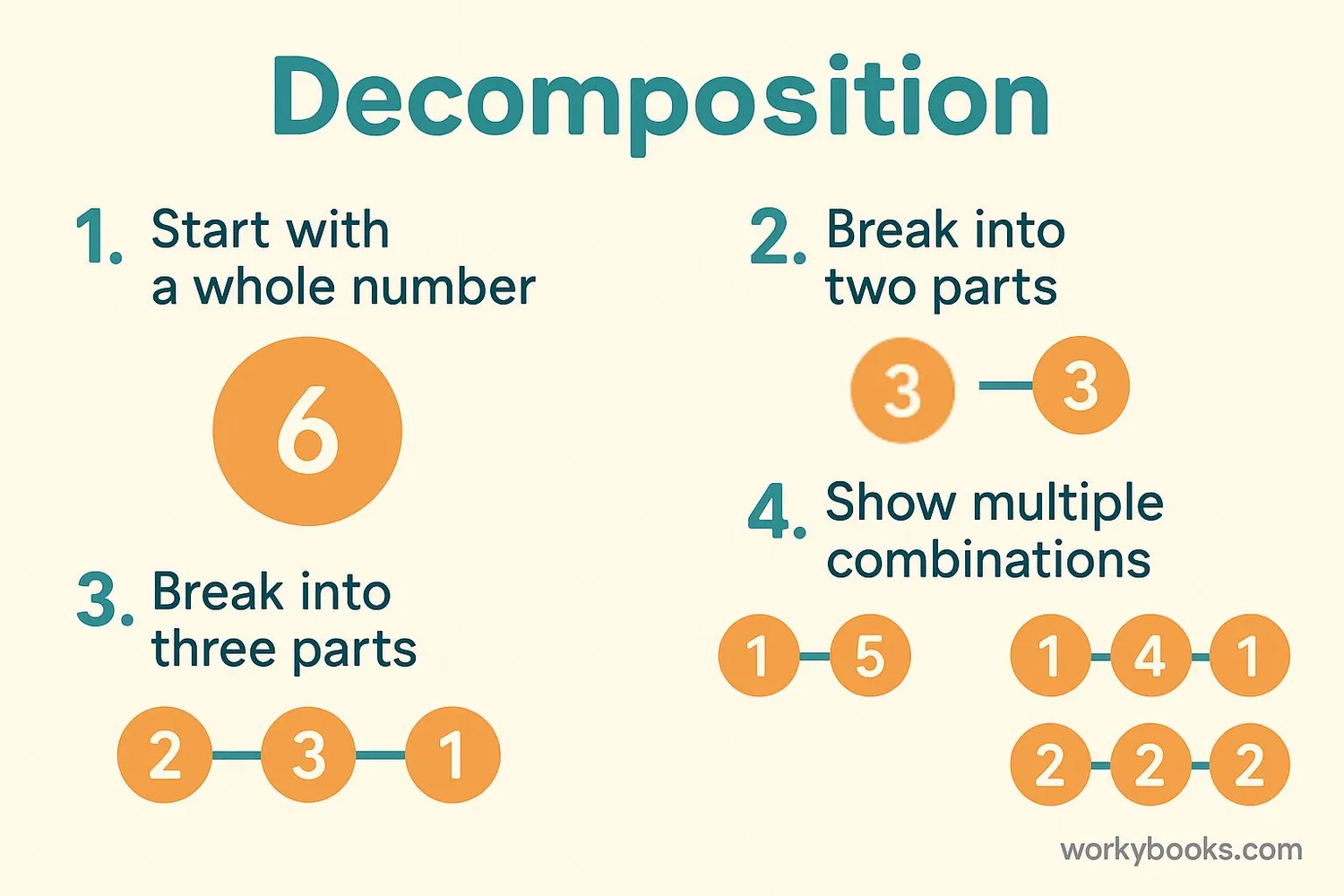
Decomposing numbers is simple once you understand the concept. Let's look at how to decompose the number 8:
1. Start with a whole number (like 8)
2. Think of two numbers that add up to your number (5+3)
3. You can break it into more parts (2+3+3)
4. Try different combinations (4+4, 6+2, 7+1, etc.)
Remember
There's no single right way to decompose a number. The important thing is that all the parts add up to the original number.
Different Ways to Decompose Numbers
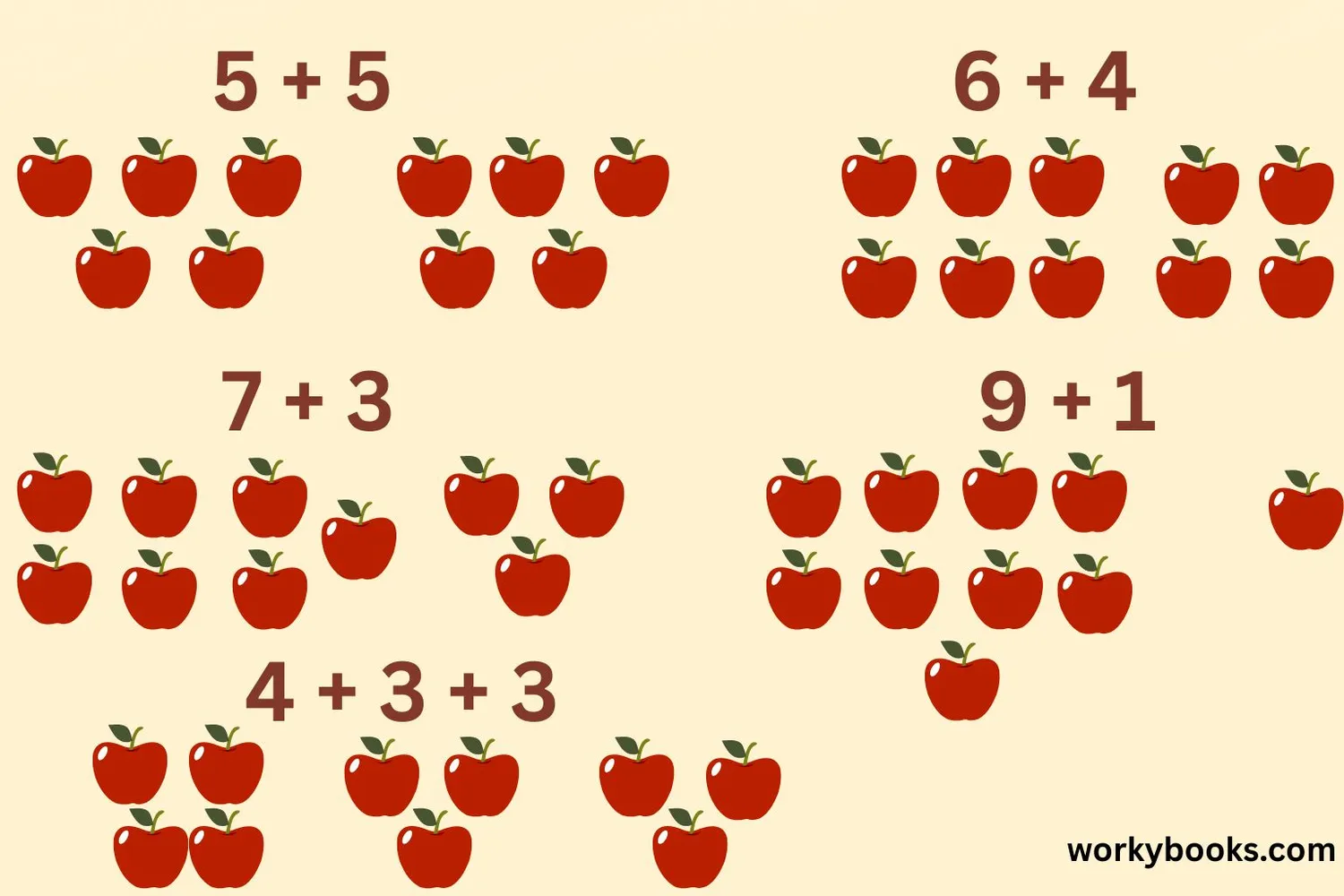
Numbers can be decomposed in many different ways. Let's look at the number 10:
Two Parts
7 + 3 = 10
Three Parts
4 + 4 + 2 = 10
Four Parts
3 + 3 + 2 + 2 = 10
With Zero
10 + 0 = 10
Strategy
When decomposing, look for combinations that make the math easier. For example, breaking 15 into 10 and 5 makes addition and subtraction simpler.
Decomposing and Place Value
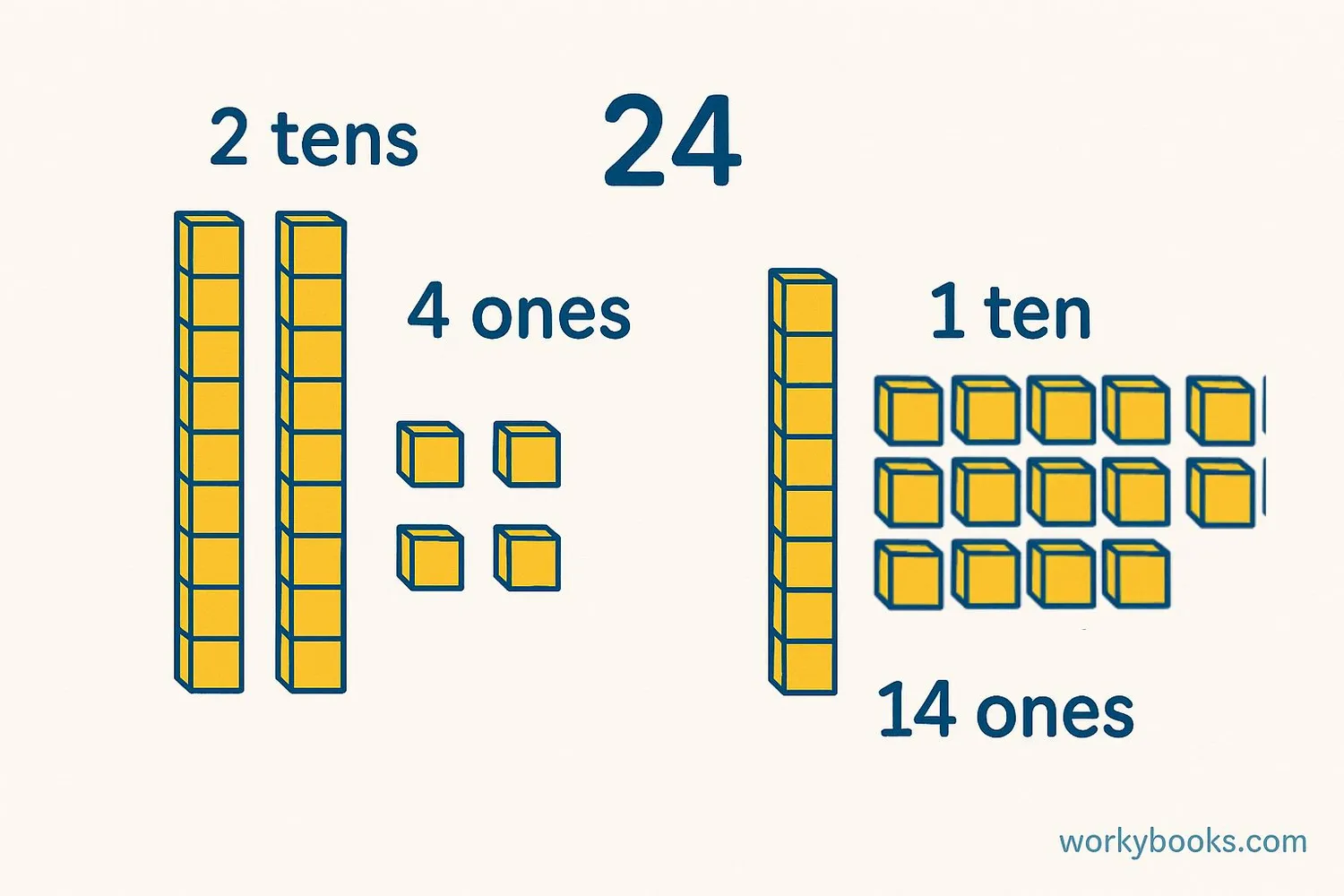
Place value helps us decompose numbers into tens, ones, hundreds, etc. This is especially useful for larger numbers.
Expanded form is a special way to decompose numbers using place value. For example:
35 = 30 + 5 (3 tens and 5 ones)
124 = 100 + 20 + 4 (1 hundred, 2 tens, and 4 ones)
Let's decompose 46 using place value:
Expanded Form
Expanded form is a type of decomposition that shows the value of each digit: 328 = 300 + 20 + 8
Decomposing to Add and Subtract
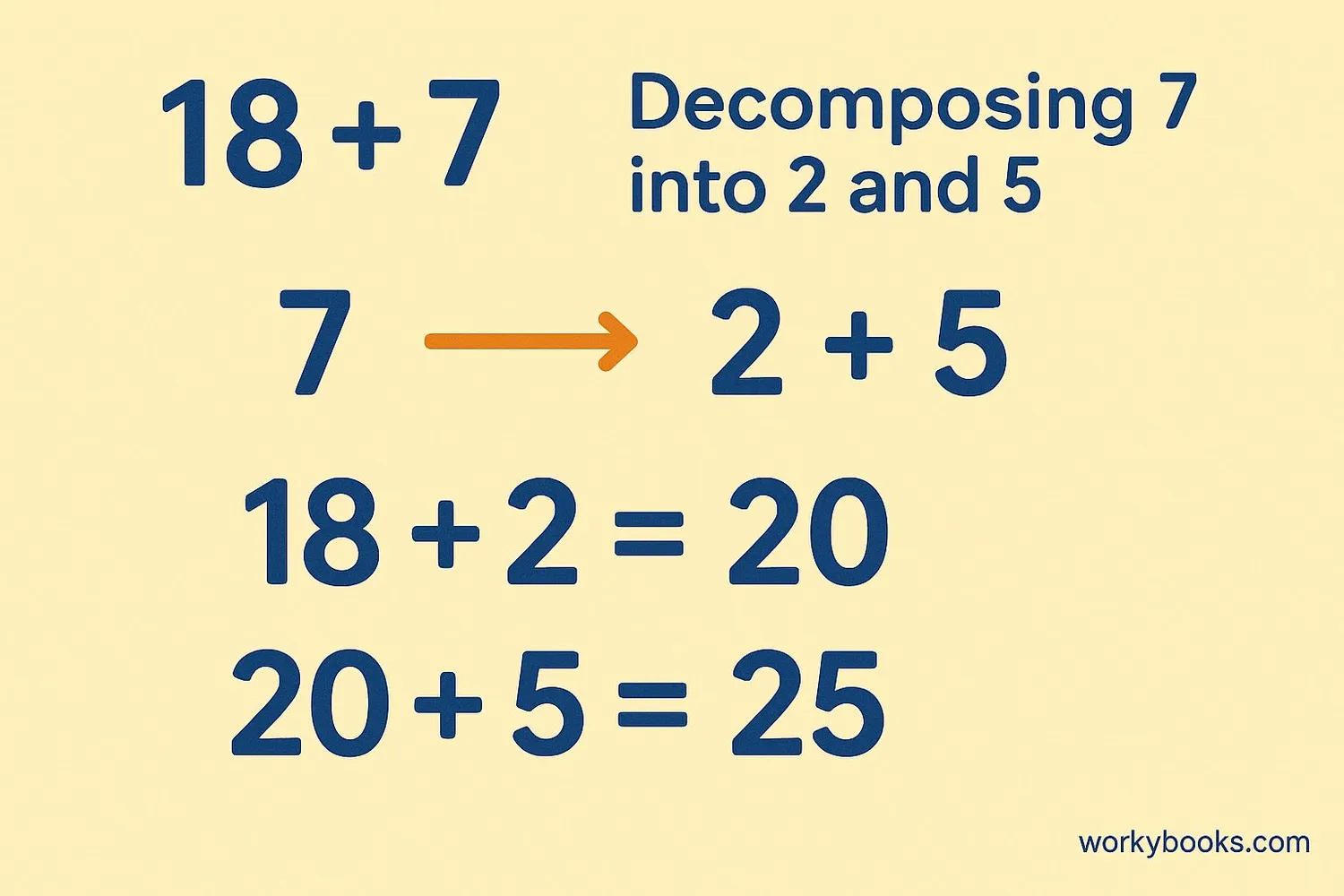
Decomposing numbers can make addition and subtraction much easier. Here's how:
Addition Example: 15 + 8
Decompose 8 into 5 + 3
Then: 15 + 5 = 20
Then: 20 + 3 = 23
Subtraction Example: 32 - 7
Decompose 7 into 2 + 5
Then: 32 - 2 = 30
Then: 30 - 5 = 25
This strategy is especially helpful when working with larger numbers or when regrouping (borrowing) is needed.
Strategy Tip
When adding, decompose to make a ten. When subtracting, decompose to subtract from a ten. This simplifies calculations.
Decomposing Numbers Quiz
Test your decomposition skills with this 5-question quiz. Choose the correct answer for each question.
Frequently Asked Questions
Here are answers to common questions about decomposing numbers:
Math Trivia
Discover interesting facts about numbers and mathematics:
Ancient Number Systems
The concept of decomposing numbers dates back to ancient civilizations. Babylonians used a base-60 system, while Mayans used a base-20 system, both requiring decomposition for calculations.
Mathematical Thinking
Research shows that children who understand number decomposition perform better in advanced mathematics. It's considered a foundational skill for algebraic thinking.
Prime Numbers
Prime numbers can only be decomposed in one way: as 1 and themselves. For example, 7 can only be decomposed as 7 = 1 + 6 or 7 = 2 + 5, but these aren't considered prime decompositions.
Mental Math Champions
World champion mental calculators use decomposition strategies to solve complex problems quickly. They break large numbers into smaller, manageable parts to perform calculations more efficiently.





